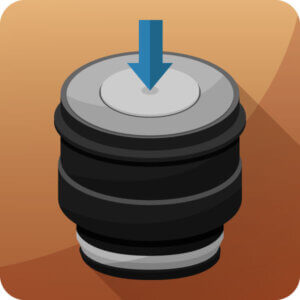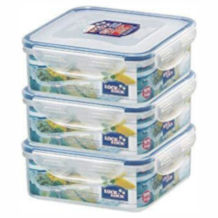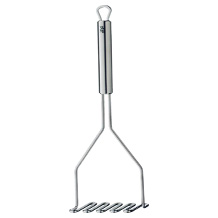Thermos flask purchasing advice: how to choose the right product
- What you need to know
- A thermos flask keeps hot and cold drinks at approximately the same temperature for several hours.
- Thermos flasks are double-walled vessels with a glass or stainless steel insert.
- The gap between the inner and outer walls is airless and therefore insulates particularly well.
- Stainless steel flaks are more robust and durable, while glass models insulate better.
Hot drinks anytime and anywhere
On the road and in a rush, it is often difficult to find a good coffee. What’s more, coffee in the office often doesn’t meet everyone’s taste. That’s why it’s a good idea to take your favorite hot drink with you. If you fill your drink into an thermos flask, also called just a thermos, you can still enjoy it hot hours later. Cold liquids also stay cold for a long time in an thermos flask. When choosing the right flask, the size is crucial in addition to the insulating capacity. Equally important is where you want to take the flask.

Thermos flasks are available in various designs. Large flasks with handles are ideal for the coffee table at home. A cylindrical thermos flask is good to take to work or on a trip. There are also small thermal mugs for coffee-to-go in between meals. A lid that also serves as a drinking vessel is particularly practical for commuters, hikers, and people an daytrips.
Who invented the thermos flask?
Vacuum vessels like the thermos flask are also called Dewar bottles after their inventor, Sir James Dewar. The principle behind the flask is simple: between the outer casing and the contents there is an airless space that insulates the beverage particularly well. The chemist Dewar first used such vessels for his experiments. In Germany, Reinhold Burger used such vessels to transport liquid gas. He tested the suitability of the bottles with hot water. This gave him the idea of using the vessel for keeping drinks warm. In 1903, he applied for a first patent which he also sold to the USA, from where the vacuum flask spread further.
Thermos or vacuum flask?
The two names describe one and the same vessel, which can cause confusion. The brand name Thermos comes from the Greek word ‘thermós’, which means ‘warm’ or ‘hot’. Over time, it became synonymous with insulated vessels. Today, the Thermos brand belongs to the Japanese Taiyo Nissan group. Since it is a protected brand name, other manufacturers call such flasks vacuum flasks.
How a thermos flask works
A thermos flask is particularly suitable for transporting cold and hot liquids because its design minimises heat transfer between the contents and the surroundings. The working principle of a thermos flask is quite simple. It is a double-walled vessel with an airless space between the walls. This vacuum acts as a thermal insulation, because in an airless space there are no molecules that could conduct heat.
When looking into a thermos flask with a glass insert, it is noticeable that the inner wall has a reflective coating. This mirroring further increases the insulating performance, because it causes the inner wall to reflect the radiant heat back into the flask, which unlike heat transfer by conduction is not prevented by the vacuum. In thermos flasks made of double-walled stainless steel, the steel surface creates a similar effect.

Why do hot drinks get cold?
Everyone knows that hot drinks and food get cold after a while. There are three reasons for this. Heat transfer always takes place from warm to cold. A freshly made coffee is warmer than its surroundings and gives off its heat. Some of the heat disappears into the table via the cup. This is called heat conduction. The second cause of heat loss is convection. The hot coffee heats the air above the beverage so that it rises and lets cold air flow in. This also absorbs the heat from the coffee and rises. This continues until the coffee has reached ambient temperature. Thirdly, temperature is lost through heat radiation. A thermos vessel reduces heat conduction through the double wall, makes convection more difficult through the sealed closure, and makes it so that the heat radiation is reflected back into the beverage through the mirroring.
How to find the right product
First of all, you should ask yourself where the thermos flask will be used. A flask that is to be taken on trips and hikes needs besser insulation than one that is intended for the daily commute to the office. A flask for use at home, on the other hand, has to meet somewhat different requirements. Other important aspects are the capacity of the thermos flask and the material.
Material and insulation capacity
Thermos flasks have an inner wall made of glass or stainless steel. The material of the outer shell varies; stainless steel is often used, but plastic is also common. In the past, the inside of most thermos flasks was made of glass. It has a higher insulating capacity than stainless steel, which conducts heat better. However, glass is not too suitable for transport because of its fragility. Stainless steel is a good choice instead. For home use only, however, it makes sense to choose a model with an inner wall made of glass. The material also plays a role in cleaning. Many models made of plastic, for example, are not dishwasher-safe and must be cleaned by hand. It is best not to clean an insulated bottle in the dishwasher if the manufacturer does not explicitly state that the product is dishwasher-safe.
Good thermos flasks keep a drink constantly hot for about four hours. After that, the temperature should drop as slowly as possible. Most vacuum flasks keep a hot drink at a comfortable drinking temperature for about 12 hours and a cold drink for about 24 hours. However, these figures refer to ideal conditions. When an insulated flask is completely filled and rarely opened, the least amount of heat exchange takes place. The actual insulating capacity in hours will therefore always be somewhat less than the manufacturer specifies.
Watch out for harmful substances
Some thermos flasks still contain the dangerous substance bisphenol A, or BPA for short. It has hormone-like properties and is found in plastics. It dissolves when heated and gets into our food. So make sure you buy a product without BPA. Many insulated containers have a label to this effect.
Weight and capacity
Thermos flasks come in different sizes, with volumes ranging from 13.5 oz. to 34 oz. and even more than a gallon. Depending on the size, they are particularly suitable for a certain range of uses. A flask with a capacity of 34 oz. holds about five large cups or eight small cups. For singles who only transport coffee for their own use, a thermos flask with a size of 13.5 oz. is sufficient. If you want to share or drink a lot, you should go for a larger model with a capacity of 34 oz. Thermos flasks with a volume of 34 oz. are the most common on the market. Flasks with a capacity of half a gallon are ideal for large households or for receiving visitors. Even larger vacuum flasks are well suited for parties.
The weight of the thermos flasks plays an important role for transport. However, the empty weight of a thermos flask with a capacity of 34 oz. varies greatly from model to model. Commercially available models weigh about one or two pounds. Hence, carrying a full thermos with you may mean carrying around a weight of four and a half pounds. Commuters and hikers should therefore make sure that the empty weight is as low as possible.
Type of closure
The vacuum between the walls of a thermos flask is created fairly reliably with today’s production methods. The weak point of insulated flasks is the closure. This is where most of the heat can be lost. The quality of the seal is therefore a crucial factor. A closure ring with a rubber seal not only prevents the drink from leaking, but also stops the heat from escaping. However, plastic sealing rings can affect the taste of the liquids. Customer reviews often include a section about this problem.
There are a number of different types of closures for thermos flasks. Some closures are better suited for transport, others are more suitable for use at home. The following types of closures are common for thermos flasks:

Screw cap
The simplest form of closure. The screw cap is unscrewed more or less, depending on the desired quantity. This closure can also be unscrewed completely and is therefore easy to clean. With some simple models, dosing is impossible. In this case, the cap must be unscrewed completely each time.

Push-button opening
The bottle is opened by pressing the cap down like a button. When pressed again, the cap pops up again and the bottle is closed. The advantage of this type of closure is that it can be operated with one hand. The push-button cap can usually be removed. However, its design makes it difficult to clean.

Pressure point
Many thermos flasks for domestic use have a pressure point for pouring the drink, which can be operated with one hand. This pressure point is located at the back of the lid. In addition to the flask seal, these models have a separate pouring seal that opens when pressure is applied to the rear part of the lid, allowing the contents to flow out. The dispensing quantity can be dosed by the pressure. Depending on the amount of force applied, the valve is opened more or less.

Pump cap
With this mechanism, the beverage is pumped out of the flask. This is particularly suitable for flasks with a very large capacity. Large vacuum flasks are used, for example, at events, such as a big birthday party. However, the pump mechanism consists of several individual parts, which is why a pump cap is difficult to clean.
Other features
A thermos flask for the coffee table should have a wide base for optimal stability. Flasks for domestic use taper towards the top to make pouring drinks easier. They are therefore similar in shape to a classic coffee or tea pot. Such flasks have a spout that facilitates the targeted pouring of liquids. A good flask should have a spout with a tear-off edge that prevents any dripping.
Thermos flasks for on the go are cylindrical and have a removable lid that can be used as a cup. Often several of these cups are included in the delivery. They should also have a good insulating capacity, because a drink loses temperature quickly in the small open cups anyway. The cups offer the advantage that you never have to drink directly from the bottle and possibly scald yourself.
Especially with vacuum flasks for domestic use, the design plays a role. When the flask is placed on the dining table, it is nice if it visually matches the rest of the tableware. Plastic offers many variations in terms of shape and color, but doesn’t have very good insulating properties. For excursions and hikes, the appearance of the vessel is not important. For this, a practical and robust design should be chosen.
What does a thermos flask cost?
Thermos flasks are available for as little as $10. If you are only looking for a container that reliably keeps liquids hot or cold, you will also find a suitable model in the lower price segment. In the medium price range of $15 to $30, there are very many vacuum flasks of good quality. Before buying, it is best to find out online whether the model you have chosen has a good insulating performance. The basic construction of all thermos flasks is the same. They differ mainly in the material used and in shape, depending on whether they are designed for home use or on the go. Expensive thermos flasks in the price range of $45 or more are mostly designer items. If you don’t attach great importance to the appearance of the flask, such models are not of interest to you.
Things to consider when using a thermos flask
If you have bought a vacuum flask, its use is self-explanatory. After you have rinsed the flask a few times with hot water, it is ready for use. But it is the cleaning that can raise some questions. The following tips might be interesting for you.
How to clean a thermos flask?
You will probably not use the flask exclusively for coffee, but also for other drinks. However, if you pour a different drink into the vacuum flask after coffee, residues may affect the taste of that drink. Simply rinsing out the thermos is often not enough. It is better to clean it thoroughly. Regular cleaning makes sense anyway to prevent unpleasant odors or residues from forming.
All manufacturers of vacuum flasks also have cleaners in their range, but they are often not very cheap. Home remedies can be used to clean the thermos just as thoroughly.
Easy cleaning with water
Rinse the thermos after each use. This is the easiest way to prevent unwanted residues.
- Rinse the flask with warm water and a little washing-up liquid.
- Use a dishwashing brush for a more thorough cleaning.
- If necessary, disassemble the lid into its individual parts and wash them thoroughly.
- After cleaning, rinse everything thoroughly again so that your drinks do not taste of rinsing water.
- Dry the flask with a cloth and leave it to dry completely in a well-ventilated place.
If you don’t have a suitable dishwashing brush to hand, rice will do the cleaning just as well. Simply put some rice in the flask together with rinsing water, close the lid and give it a good shake. The rice grains will carry away the remains in the flask.
Thorough cleaning of a stainless steel thermos flask
Stainless steel thermos flasks are robust and therefore the most common. They are also easy to clean. Proven household remedies for this are baking soda or powder. Mixed with water, these form an alkaline solution that breaks down and dissolves fats and proteins.
- Put a teaspoon of baking soda or baking powder in the pot.
- Slowly fill with hot water (this may cause foaming).
- If necessary, remove the cap and place it in a bowl.
- Add a teaspoon of baking soda or powder to the bowl and pour in hot water.
- After a short soaking time, the remedy will have softened any residue present.
- Simply rinse them off with water.
Thorough cleaning of a glass thermos flask
Since the inside walls of a glass thermos are coated with a reflective coating, abrasive cleaning agents such as baking soda should not be used. A tried and tested household remedy for cleaning a glass thermos flask is denture cleaner. When cleaning with denture cleaner, proceed in exactly the same way as when cleaning with baking soda or baking powder as described above.
Do not use strong cleaners and acids
Strong cleaning agents are not well suited for cleaning vacuum flasks. Agents such as acetic acid, for example, can attack the seals on the lid and make the bottle inoperable. If you want to descale the bottle once, diluted citric acid is a good remedy, but it should not be used for regular cleaning.
Increase insulation capacity
If you want to fill a hot drink into a thermos bottle, you will achieve a longer heat retention time if you first heat the bottle with hot water. As soon as you fill a hot beverage into a cold flask, heat is lost directly. It is the same with cold drinks. Fill the vacuum flask with cold water and pour it out again after about five minutes. Now the cold drink will stay cool for even longer.
Where to dispose of an old thermos flask?
At the latest when the flask leaks and the material shows clear signs of wear, the flask should be replaced. For many users, however, it is difficult to judge how the old thermos flask should be disposed of. After all, most products contain different materials, usually a combination of plastic, glass, and stainless steel.
If you want to dispose of the thermos completely, bring it to a recycling centre. However, you can also be extra neat and take the flask apart and dispose of each part individually in the appropriate waste bin.
Image 1: © Александр Беляшов / stock.adobe.com | Images 2-6: © FinalCheck





















 146,913 reviews
146,913 reviews





